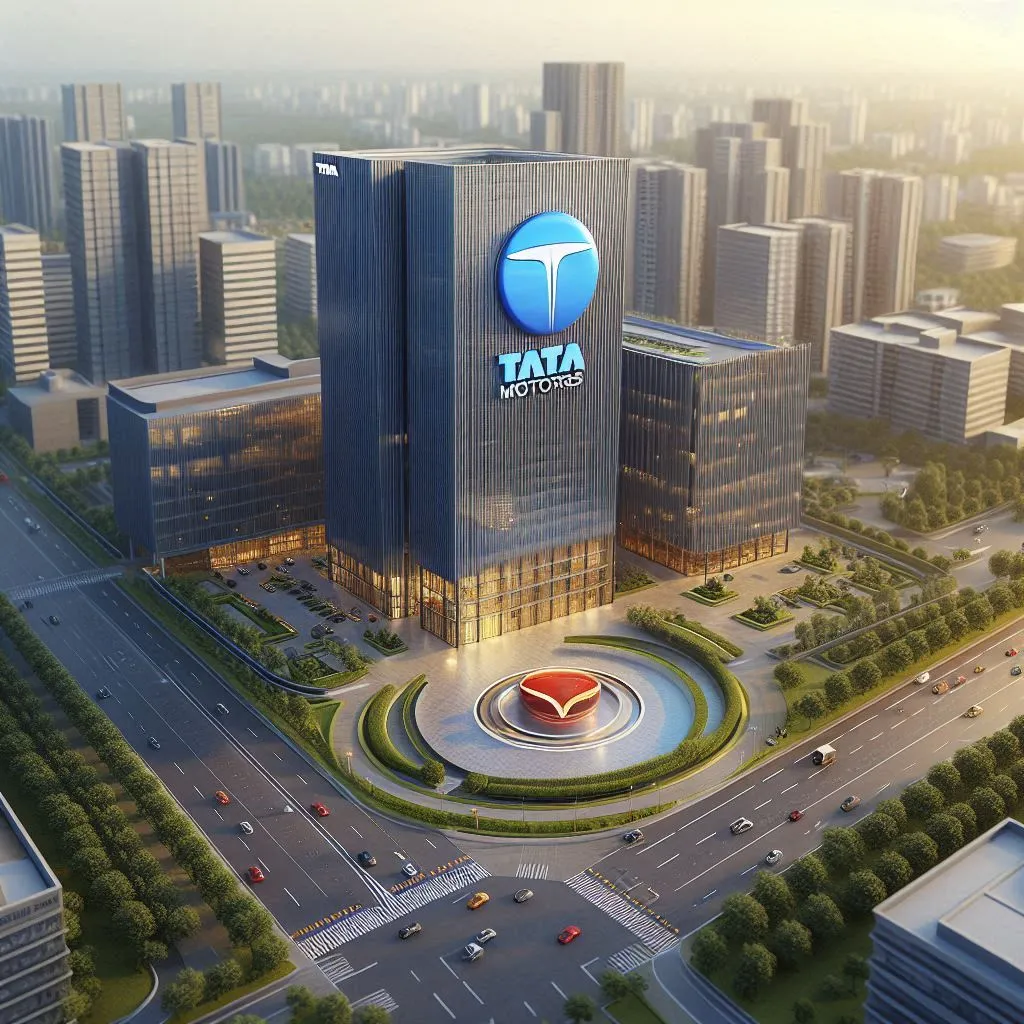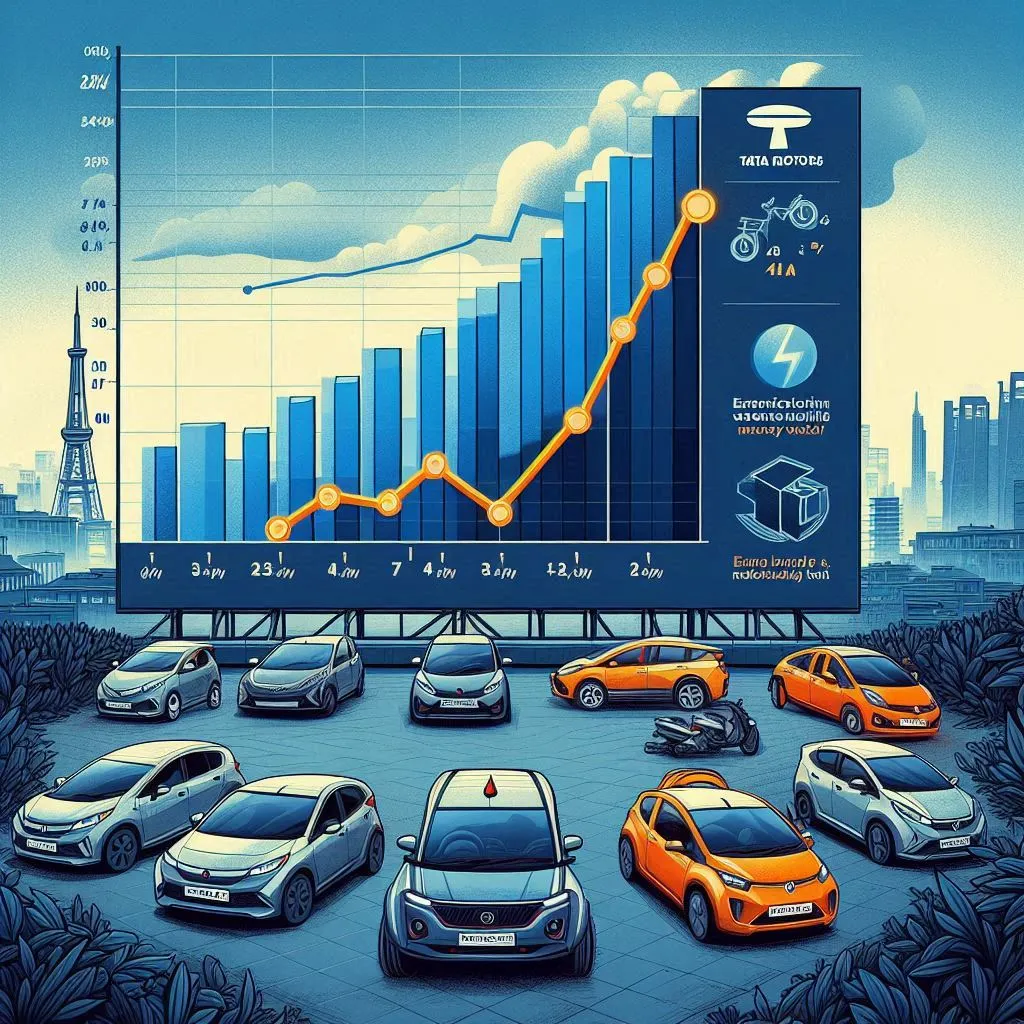
The stock market is often described as a rollercoaster, full of thrilling highs and sudden drops. Tata Motors’ stock exemplifies this perfectly—an exciting ride for investors, with twists and turns that could either lead to massive gains or substantial losses. With its significant presence in the automotive industry and its aggressive strides into electric vehicles (EVs) and global expansion, Tata Motors offers a tempting opportunity for investors. But with this comes the need for caution, as market dynamics and internal challenges can make this stock unpredictable.
As one of India’s largest automakers and an important player in global markets, Tata Motors’ reach spans across regions and industry segments. From the company’s revolutionary entry into electric mobility to its ventures into new and emerging markets, Tata Motors offers an interesting case for both growth and value investors. But does this make it the best investment choice right now?

In this article, we’ll dissect Tata Motors’ share price journey, strategic decisions, financial health, and future outlook. So, buckle up for an adventure that navigates the turbulent road of stock trading with Tata Motors as our vehicle!
Tata Motors Share Price: A Thrilling Adventure
The past year has seen Tata Motors’ stock take investors on an exhilarating ride, soaring to a high of ₹1,179.00 and plunging to ₹608.30. This volatility is a reflection of the ever-changing stock market and the company’s evolving strategies. While many would analyze Tata Motors’ stock through cold, hard numbers, we see it as a thrilling journey with numerous factors influencing the stock price. Tata Motors’ fluctuations are as dynamic as the automotive industry it operates in, and every peak and valley are a new chapter in its story.
The automotive industry itself is in a period of rapid transformation, with electric vehicles and advanced mobility solutions driving the change. Tata Motors, with its own innovative contributions, has managed to stay relevant and even lead in some of these transitions, particularly in its home market of India. However, this also means it has had to take on additional risks, including significant R&D expenditures and the challenges of scaling production for its EV lineup. These factors can, and often do, reflect in the stock price, causing considerable movement over short periods.

Tata Motors’ share price journey reflects this dynamic landscape. The current share price sits at ₹963.60, down from its 52-week high, yet still significantly above its lowest point. This shows the stock’s ability to recover from significant drops, but it also signals that the path forward may be unpredictable.
For short-term traders, such volatility can present opportunities for quick gains, but it also increases the risk of losses if the stock turns against them. On the other hand, long-term investors may view these fluctuations as part of the broader journey, focusing more on Tata Motors’ fundamental strengths and its potential for sustained growth over time.
The Road Less Traveled: Tata’s Winning Strategy
Tata Motors isn’t just content with maintaining its market position—it’s actively driving forward with bold strategies. One of the company’s biggest moves has been its push into the electric vehicle (EV) market. As the global automotive industry shifts toward sustainability and electric mobility, Tata Motors is positioning itself as a key player.
In India, Tata Motors leads the EV market, capturing over 70% of the country’s electric vehicle market share. This leadership comes primarily from its Nexon EV, one of the most popular electric cars in the region. This achievement is remarkable in a market where electric mobility is still in its nascent stage but rapidly gaining traction. Tata Motors, through its subsidiary Tata Passenger Electric Mobility, aims to be at the forefront of this movement. The company plans to launch 10 new electric vehicles by 2025, reflecting its long-term commitment to green mobility. Power up your investment journey with the Aulet Home Level 2 EV Charger and ensure your Tata Motors electric vehicle is always ready to hit the road with cutting-edge charging technology.
Furthermore, Tata Motors has invested heavily in infrastructure and partnerships that will support its EV ambitions. The company has partnered with Tata Power to create a network of charging stations across India, addressing one of the major challenges to EV adoption—charging infrastructure. This strategy not only enhances the customer experience but also positions Tata Motors as a holistic provider of electric mobility solutions.

This approach also includes entering new markets, particularly in developing regions like Asia and Africa, where growing middle classes and increasing disposable incomes create new opportunities for vehicle sales. Tata Motors’ ability to innovate with EVs while expanding into these markets is central to its growth strategy. By embracing change and pushing into new territories, the company is steering its own course, much like a rally driver navigating uncharted terrain.
The EV segment, however, is just one part of Tata Motors’ broader strategy. The company has also invested significantly in its commercial vehicle business, where it remains one of the dominant players in India. Commercial vehicles, including trucks and buses, contribute a significant portion of Tata Motors’ revenues. The company has focused on enhancing fuel efficiency and introducing cleaner, more environmentally friendly versions of its vehicles, in response to both regulatory changes and shifting consumer preferences.
In international markets, Tata Motors continues to make headway. Its acquisition of Jaguar Land Rover (JLR) in 2008 was a pivotal move that transformed its global presence. Despite initial challenges, JLR has become a valuable asset for Tata Motors, particularly in premium segments. While JLR sales have fluctuated in recent years due to economic factors and changing consumer preferences, the luxury automaker remains a crucial part of Tata Motors’ portfolio.
Potential Pit Stops and Detours Ahead
As with any adventure, there are potential obstacles ahead. Tata Motors’ stock, which is currently priced at ₹963.60, faces resistance levels between ₹984 and ₹1,036. These resistance points act like roadblocks, preventing the stock from accelerating beyond these thresholds. This recent dip raises the question: Will Tata Motors break through these barriers and continue its upward trajectory?
Investors should keep an eye on support levels between ₹950-940, which serve as refueling stations for the stock to regain momentum. Breaking through resistance levels could signal a new phase of growth, while falling below support levels could indicate a slowdown.
Stock analysts frequently emphasize the importance of technical levels like support and resistance when making trading decisions. For Tata Motors, these levels are especially significant given the company’s volatility. Resistance at ₹1,036 could prove a formidable barrier in the near term, particularly as external factors such as inflation, interest rates, and global market conditions continue to weigh on investor sentiment.
One potential “detour” that Tata Motors investors should consider is the company’s exposure to global economic cycles. While Tata Motors has made significant strides in expanding its EV lineup and diversifying its markets, it remains vulnerable to economic downturns, especially in key regions like Europe and China. The automotive industry is cyclical, and periods of economic weakness typically led to reduced consumer demand for new vehicles, impacting manufacturers’ revenues.
Additionally, the supply chain challenges that have plagued the global economy in recent years continue to affect the automotive sector. Shortages of critical components like semiconductors have disrupted production lines, leading to delays in vehicle deliveries. Tata Motors has not been immune to these issues, with its JLR subsidiary particularly impacted by the semiconductor shortage. While the company is working to mitigate these challenges, they remain a potential headwind in the near term.

Fueling Up for Future Growth
Despite the challenges Tata Motors faces, there’s reason for optimism. The company has built a strong foundation with a global presence, diversified manufacturing, and a robust focus on electric mobility. Analysts remain cautiously optimistic about Tata Motors, with support levels offering potential opportunities for a rebound. The company’s EV initiatives and its strategic market expansions are expected to fuel future growth.
Long-term investors, in particular, may see Tata Motors as a compelling growth story. The company’s ability to adapt to new market conditions and invest in future technologies sets it apart from many of its peers. However, success in the EV market will require continued innovation and a strong execution strategy, particularly as competition intensifies.
One of the most significant growth drivers for Tata Motors is the increasing adoption of electric vehicles worldwide. As governments push for stricter emissions regulations and consumers become more environmentally conscious, demand for EVs is expected to soar. Tata Motors is well-positioned to benefit from this trend, particularly in emerging markets like India, where it has already established a strong foothold.
Tata Motors’ plans to invest ₹15,000 crore in the EV segment over the next five years underscores its commitment to this growing market. The company aims to increase its EV sales to 25% of its total passenger vehicle sales by 2025, a significant leap from its current share. To achieve this goal, Tata Motors is not only focusing on expanding its EV portfolio but also on building an ecosystem that supports electric mobility, including charging infrastructure and battery manufacturing.

In addition to its EV ambitions, Tata Motors continues to invest in advanced technologies such as autonomous driving, connected vehicles, and shared mobility solutions. These innovations have the potential to reshape the automotive industry, and Tata Motors is positioning itself to be at the forefront of this transformation.
However, the company must also navigate the challenges that come with such rapid technological advancements. The race to develop autonomous vehicles, for example, is highly competitive, with major players like Tesla, Waymo, and traditional automakers all vying for a share of the market. While Tata Motors has made progress in this area, it will need to continue investing in research and development to stay ahead of the curve. Stay ahead in the electric vehicle race with the Grizzl -E 48A Ultimate Fast Charger—perfect for those who value speed and reliability in their charging solutions.
Another factor that could fuel Tata Motors’ growth is its focus on sustainability. The company has set ambitious targets to reduce its carbon footprint and improve its environmental, social, and governance (ESG) performance. As investors increasingly prioritize companies with strong ESG credentials, Tata Motors’ commitment to sustainability could make it an attractive investment option.
Leave a Reply